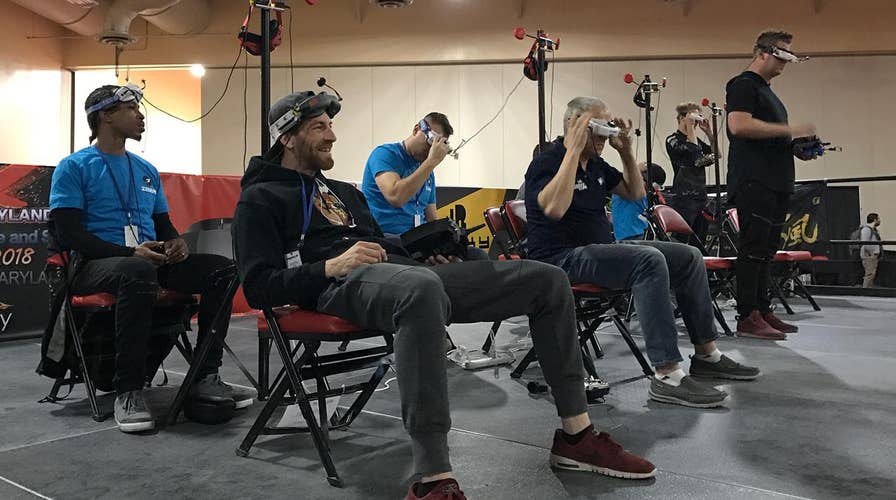Tech and sport combine in drone racing finals
Contestants from all over the world competed in the Challengers Cup to see who is the best drone racer.
At an off-strip Las Vegas casino this past weekend, 32 individuals from around the world, the youngest at 12 years old, competed in a burgeoning new sport: drone racing.
The pilots were vying for a $50,000 cash purse as they proved their skills navigating an obstacle course at the Challenger’s Cup, the granddaddy of them all, for the International Drone Racing Association (IDRA).
The sport is growing fast as drone technology improves and more enthusiasts decide to become amateurs and professionals. One of the challenges is to increase the sport’s fan base and some hope the championship will be televised one day.
“It’s seeming like it could be more like a profession. It’s like the next type of NASCAR,” said pilot Noah Schnapp.
BORDER PATROL TESTING DRONES TO BE ITS 'EYES IN THE SKY'
“I’ve always tried to keep it closer to motor sports rather than some other organizations try to attach us to e-sports… No, we’re the future of motor sports… really bringing that new tech experience and immersive experience to motor sports,” said IDRA CEO Justin Haggerty.
Competitors are not following their drones by line of sight. Wearing VR goggles, they’re plugged into a live analog feed and can steer their drone sitting down away from the netted course. A small camera is attached on top of the drone whereby pilots can get a bird’s eye view of the course.
“You think when you’re a little kid, everyone wants to fly, you know, everyone has the dream. This is the closest you can get to it…You’re seeing out of the front of the copter…Flying line of sight, watching the copters, we would never be able to make it through these courses,” said drone pilot Mackenna McClure.
The 32 pilots qualified at different races around the world from Manila to Buenos Aires. Companies like drone manufacturers and energy drink labels sponsor many of the contestants.
DRONE SAVES AUSTRALIAN TEEN SWIMMERS IN WORLD'S 1ST RESCUE MISSION WITH UNMANNED AIRCRAFT
This particular race was held indoors with a course that consisted of hoops dangling from the ceiling and various gates to fly through. The pilots fly their drones at speeds of 70 to 80 miles per hour. Some of them prefer competing outside since there are less obstacles and the chances of hitting rafters or walls are diminished.
If you were to crash and burn by hitting an obstacle or getting caught in the net, you would be eliminated.
“Outdoor racing, you make different style tracks. Inside racing, you make different style tracks. Florida, we race in a lot more wide open, faster tracks, whereas you go indoors, it’s usually tighter, more skill and maneuverability, and stuff like that,” said McClure.
The sport is a close-knit community and many of the pilots see each other at numerous races throughout the year. Age is also not a prerequisite to compete.
DRONES ARE BEING USED TO DELIVER BLOOD, SAVING LIVES IN AFRICA
12-year-old Ashton Gamble got his first drone from his dad as a Christmas gift. He went toe-to-toe with some of the league's best. He’s already sponsored and practices right after he gets done with school for the day.
“In my first couple of races, it was a little bit intimidating, seeing all these older people, and now I’ve gotten used to them.”
14-year-old Andy Marachilian bested the competition, coming in first place.

